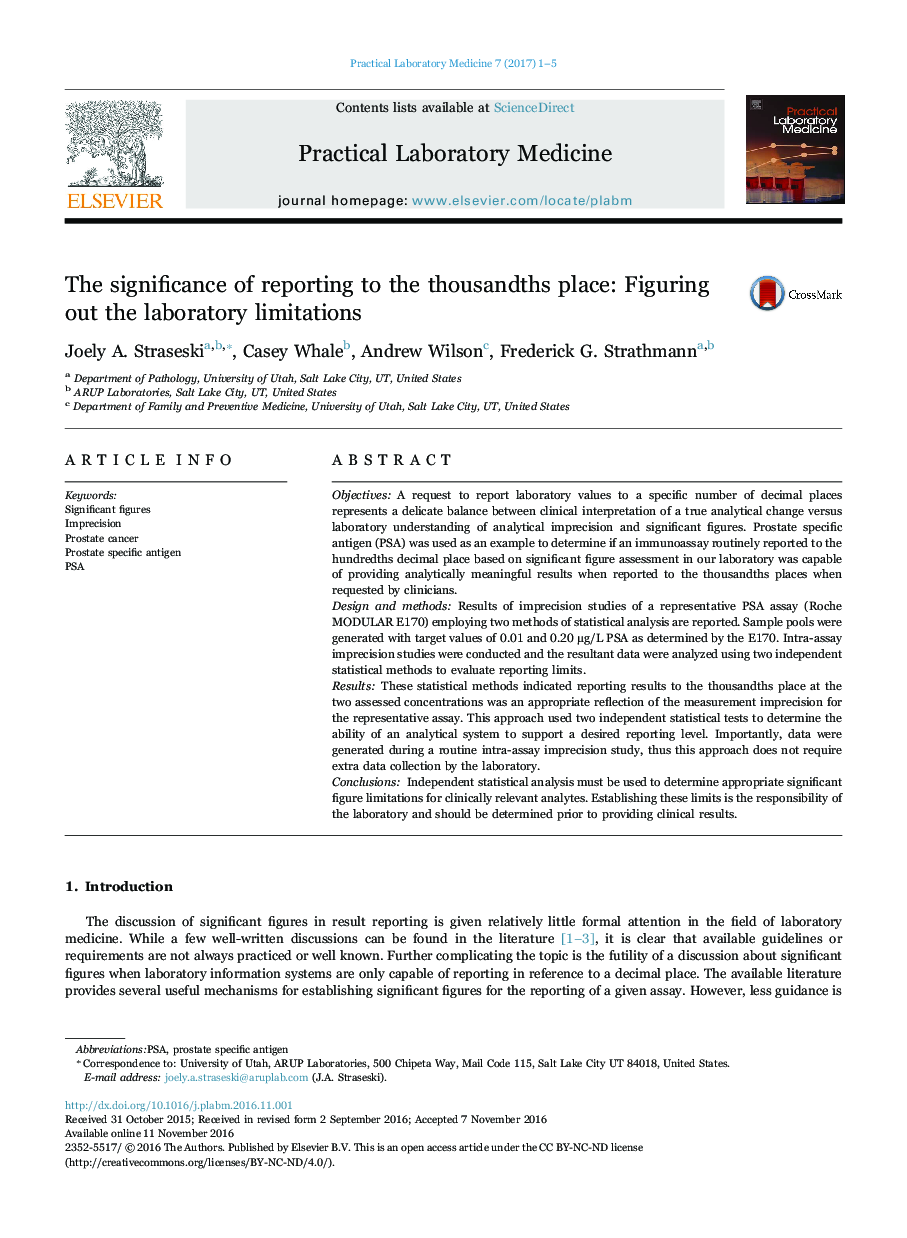| کد مقاله | کد نشریه | سال انتشار | مقاله انگلیسی | نسخه تمام متن |
|---|---|---|---|---|
| 5584799 | 1567971 | 2017 | 5 صفحه PDF | دانلود رایگان |
- Clinicians may request results to more decimal places than labs routinely report.
- PSA is an example of an analyte that may be reported to multiple decimal places.
- Two statistical approaches verified PSA assay precision to the thousandths place.
- Data distribution was not affected by reporting to either 2 or 3 decimal places.
- Responsibility of reporting unit magnitude lies with each clinical laboratory.
ObjectivesA request to report laboratory values to a specific number of decimal places represents a delicate balance between clinical interpretation of a true analytical change versus laboratory understanding of analytical imprecision and significant figures. Prostate specific antigen (PSA) was used as an example to determine if an immunoassay routinely reported to the hundredths decimal place based on significant figure assessment in our laboratory was capable of providing analytically meaningful results when reported to the thousandths places when requested by clinicians.Design and methodsResults of imprecision studies of a representative PSA assay (Roche MODULAR E170) employing two methods of statistical analysis are reported. Sample pools were generated with target values of 0.01 and 0.20 μg/L PSA as determined by the E170. Intra-assay imprecision studies were conducted and the resultant data were analyzed using two independent statistical methods to evaluate reporting limits.ResultsThese statistical methods indicated reporting results to the thousandths place at the two assessed concentrations was an appropriate reflection of the measurement imprecision for the representative assay. This approach used two independent statistical tests to determine the ability of an analytical system to support a desired reporting level. Importantly, data were generated during a routine intra-assay imprecision study, thus this approach does not require extra data collection by the laboratory.ConclusionsIndependent statistical analysis must be used to determine appropriate significant figure limitations for clinically relevant analytes. Establishing these limits is the responsibility of the laboratory and should be determined prior to providing clinical results.
Journal: Practical Laboratory Medicine - Volume 7, April 2017, Pages 1-5
